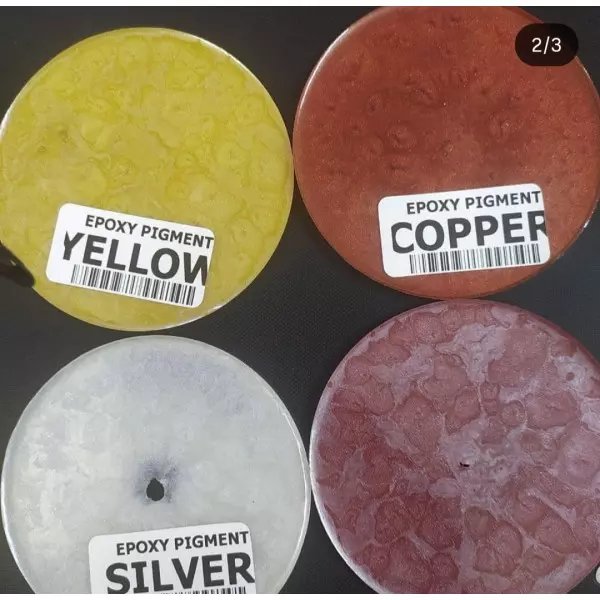Epoxy Pigment Manufacturers In Haryana
Details of Epoxy Pigment
Epoxy pigment refers to colorants specifically designed for use with epoxy resin systems. These pigments are used to color epoxy for decorative or functional purposes, such as in epoxy flooring, countertops, river tables, jewelry, coatings, and artwork.
Types of Epoxy Pigments
Liquid Pigments
Pre-dispersed in a resin-compatible liquid base.
Easy to mix.
Provide strong, vibrant colors.
Used for uniform coloration.
Powder Pigments
Often metallic or mica-based.
Popular in art and countertops for creating swirling and marbling effects.
Available in pearlescent, fluorescent, and neon colors.
Paste Pigments
High concentration of pigment.
Offer rich colors.
Often used in industrial applications.
Alcohol Inks (used artistically)
Not traditional epoxy pigments but often used in epoxy art.
Create unique, abstract effects (e.g., in Petri dish art).
Key Characteristics
Property Description
Compatibility Designed to blend seamlessly with epoxy resin without affecting cure time or performance.
UV Stability Some pigments are UV-stable (important for outdoor use); others can yellow or fade over time.
Opacity/Transparency Available in both opaque and transparent/translucent versions.
Color Fastness High-quality pigments retain color over time without bleeding or fading.
Mix Ratio Typically 1–5% pigment to resin by weight, but varies based on desired opacity and pigment strength.
Applications
Art & Craft (e.g., resin jewelry, coasters, river tables)
Flooring (garage or commercial epoxy floors)
Countertops (epoxy kitchen and bathroom counters)
Marine & Industrial Coatings
Automotive Coatings
Safety & Handling
Wear gloves and work in a ventilated area.
Avoid inhaling pigment powders.
Use only epoxy-safe pigments—others may interfere with curing or cause discoloration.


